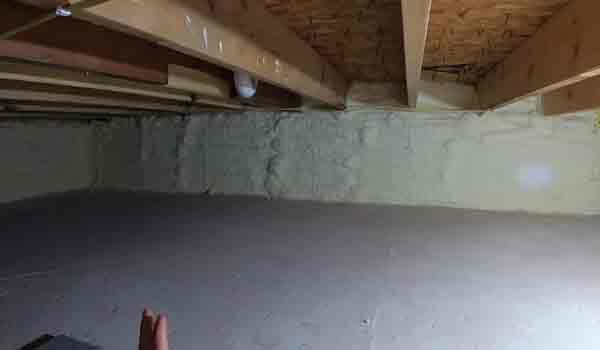How To Remove Acoustic Sealant [Common Mistakes to Avoid]

Acoustic sealant is a great way to soundproof your home or office, but it can be difficult to remove. If you’re looking to get rid of acoustic sealant, there are a few things you can do.
First, you can try scraping it off with a putty knife.
If that doesn’t work, you can try using a heat gun or hair dryer to soften the sealant so that it’s easier to remove. You may also need to use some strong solvents like acetone or MEK if the other methods don’t work.
- Use a utility knife or another sharp object to cut through the sealant
- Peel away the sealant with your fingers or a putty knife
- Clean up any residual sealant with a rag dipped in mineral spirits or another solvent
Read More About: How To Remove Sealant From Tiles
Is Acoustic Caulk Permanent?
No, acoustic caulk is not permanent. Over time, it can break down and degrade, losing its effectiveness. This is why it’s important to check your caulking regularly and repair or replace it as needed.
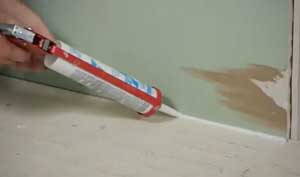
How Do You Get Acoustic Sealant Out of Clothes?
If you’ve ever found yourself with acoustic sealant on your clothing, you know it can be a pain to remove. But don’t worry, there are a few simple steps you can follow to get that sealant out of your clothes and back to looking good as new.
First, start by scraping off any excess sealant with a blunt object like a butter knife.
Once the majority of the sealant is removed, it’s time to treat the stain. Soak the stained garment in a mixture of equal parts water and vinegar for about 30 minutes. This will help break down the sealant and make it easier to remove.
After 30 minutes, wash the garment as you normally would in cold water. If the stain is still visible, repeat the soaking and washing process until it disappears completely.
Is Acoustic Sealant Toxic?
There are many types of acoustic sealants on the market, and the toxicity of each one can vary. Some acoustic sealants are made with toxic chemicals that can be harmful to your health, while others are made with non-toxic ingredients.
It’s important to read the labels of any acoustic sealant you’re considering using and to contact the manufacturer if you have any questions about its safety.
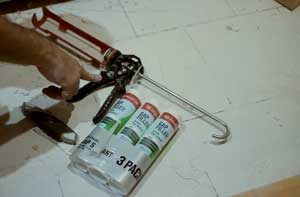
Is Acoustic Sealant Necessary?
Acoustic sealant is designed to reduce the transmission of sound. It’s usually used in conjunction with other soundproofing materials, like insulation and mass-loaded vinyl. When applied correctly, it can create an effective barrier against noise.
However, acoustic sealant alone is rarely enough to achieve complete soundproofing. It’s most effective when used in small gaps and cracks where sound can enter or escape.
So if you’re trying to block out all noise from outside, you’ll likely need more than just acoustic sealant.
In general, the acoustic sealant is most useful for: Sealing gaps around doors and windows Sealing electrical outlets and light fixtures
Sealing HVAC ductwork If you’re simply trying to reduce the amount of noise in a room, acoustic sealant can be helpful but it may not be necessary. There are other ways to reduce noise without sealing up every crack and crevice.
For example, adding carpet or draperies can help absorb sound and make a room feel quieter.
Is Acoustic Sealant Waterproof?
There are a lot of variables to consider when answering this question and it really depends on the specific product you are using. Generally speaking, acoustic sealants are not waterproof but they are water resistant.
This means that they will provide some protection against water but will not completely keep out water. There are some products that claim to be waterproof but these usually only work for a short period of time before they need to be reapplied.
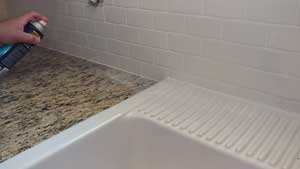
Is Smartpond Waterfall Foam Sealant Fish Safe?
Acoustic Caulk Lowe’S
If you’re looking for an acoustic caulk that can help improve the sound quality in your home, Lowe’s is a great place to start your search. There are a variety of acoustic caulk options available at Lowe’s, so you can find one that best suits your needs.
Usg Acoustical Sealant
Acoustical sealant is an important part of any soundproofing project. It is a viscous, elastomeric material that is used to fill gaps and voids to prevent noise transmission.
Acoustical sealant can be applied to walls, ceilings, floors, doors, windows, and other openings in order to create an airtight barrier that will block out noise.
There are many different brands and types of acoustical sealant on the market, so it is important to choose the right product for your needs. Sealants can be water-based or solvent-based, and they come in a variety of colors.
Acoustical sealants are typically applied with a caulking gun, and they should be allowed to cure for 24 hours before being exposed to noise.
If you are working on a soundproofing project, the acoustical sealant is an essential part of the process. Not only will it block out noise, but it will also help improve the overall look of your space.
Acoustic Caulk for Windows
If you have ever sat in a room with windows and felt like the outside noise was too loud, then you know how important it is to have good acoustic caulk around your windows.
Acoustic caulk is a type of sealant that helps to reduce the amount of noise that comes through your windows. It is typically made from silicone or another type of flexible material and can be applied easily with a caulking gun.
There are many benefits to using acoustic caulk, including the fact that it can help to improve the sound quality in your home. If you live in an area where there is a lot of traffic or other noise pollution, acoustic caulk can make a big difference in the overall comfort level of your home.
In addition, this type of sealant can also help to improve energy efficiency by keeping out drafts and preventing heat from escaping through cracks around your windows.
If you are considering adding acoustic caulk to your windows, it is important to choose a product that is specifically designed for use on window glass.
You should also take care to follow the manufacturer’s instructions carefully in order to ensure optimal results. With proper installation, acoustic caulk can provide years of enjoyment and comfort in your home.
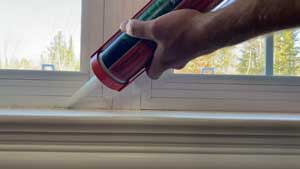
Acoustic Sealant Price
The price of acoustic sealant can vary depending on the brand, quantity, and retailer. On average, you can expect to pay between $5 to $20 per tube, with some specialty brands costing even more. Bulk packages of acoustic sealant may offer a lower price per tube.
Green Glue Acoustic Sealant
If you’re looking for an acoustic sealant that will help reduce noise in your home, look no further than Green Glue. This product is made from recycled materials and is designed to be used between layers of drywall to create a soundproof barrier.
It’s easy to apply and can be painted over once it’s dry, making it a great option for do-it-yourselfers.
Remove silicone caulk with Mineral Spirits & restoring a 30-year-old fiberglass tub
Conclusion
If you need to remove acoustic sealant, there are a few things you can do. First, you can use a putty knife or sharp object to score the sealant. This will help the solvent penetrate the sealant.
Next, apply a solvent such as a xylene or mineral spirits to the area and let it sit for a few minutes. Finally, use a razor blade or other sharp tool to scrape off the sealant.


